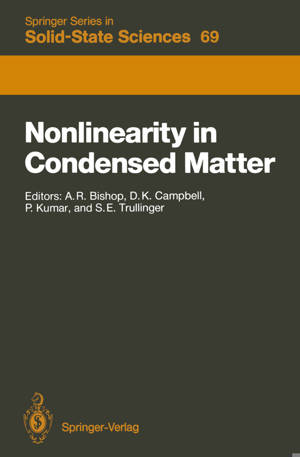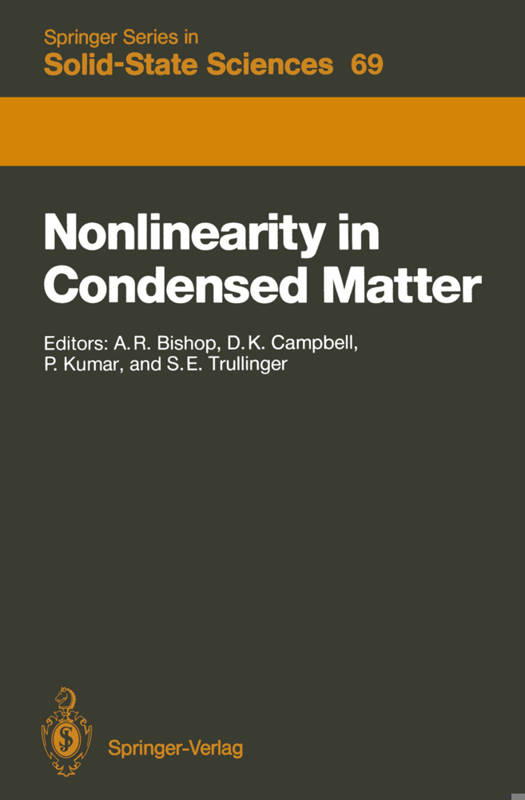
- Afhalen na 1 uur in een winkel met voorraad
- Gratis thuislevering in België vanaf € 30
- Ruim aanbod met 7 miljoen producten
- Afhalen na 1 uur in een winkel met voorraad
- Gratis thuislevering in België vanaf € 30
- Ruim aanbod met 7 miljoen producten
Zoeken
Nonlinearity in Condensed Matter
Proceedings of the Sixth Annual Conference, Center for Nonlinear Studies, Los Alamos, New Mexico, 5-9 May, 1986
€ 139,26
+ 278 punten
Omschrijving
The Sixth Annual Conference of the Center for Nonlinear Studies at the Los Alamos National Laboratory was held May 5-9, 1986, on the topic "Nonlinearity in Condensed Matter: Lessons from the Past and Prospects for the Future. " As conference organizers, we felt that the study of non- linear phenomena in condensed matter had matured to the point where it made sense to take stock of the numerous lessons to be learned from a variety of contexts where nonlinearity plays a fundamental role and to evaluate the prospects for the growth of this general discipline. The successful 1978 Oxford Symposium on nonlinear (soliton) struc- ture and dynamics in condensed matter (Springer Ser. Solid-State Sci., Vol. 8) was held at a time when the ubiquity of solitons was just begin- ning to be appreciated by the condensed matter community; in subsequent years the soliton paradigm has provided a rather useful framework for in- vestigating a large number of phenomena, particularly in low-dimensional systems. Nevertheless, we felt that the importance of nonlinearity in wider arenas than "solitonics" merited a significant expansion in the scope of the conference over that of the 1978 symposium. Indeed, many of the lessons are quite general and their potential for cross-fertilization of otherwise poorly connected disciplines was certainly one of the prime motivations for this conference. Thus, while these proceedings contain many contribu- tions pertaining to soliton behavior in different contexts, the reader will find much more as well, particularly in the later chapters.
Specificaties
Betrokkenen
- Uitgeverij:
Inhoud
- Aantal bladzijden:
- 404
- Taal:
- Engels
- Reeks:
- Reeksnummer:
- nr. 69
Eigenschappen
- Productcode (EAN):
- 9783642830358
- Verschijningsdatum:
- 8/12/2011
- Uitvoering:
- Paperback
- Formaat:
- Trade paperback (VS)
- Afmetingen:
- 152 mm x 229 mm
- Gewicht:
- 557 g

Alleen bij Standaard Boekhandel
+ 278 punten op je klantenkaart van Standaard Boekhandel
Beoordelingen
We publiceren alleen reviews die voldoen aan de voorwaarden voor reviews. Bekijk onze voorwaarden voor reviews.







